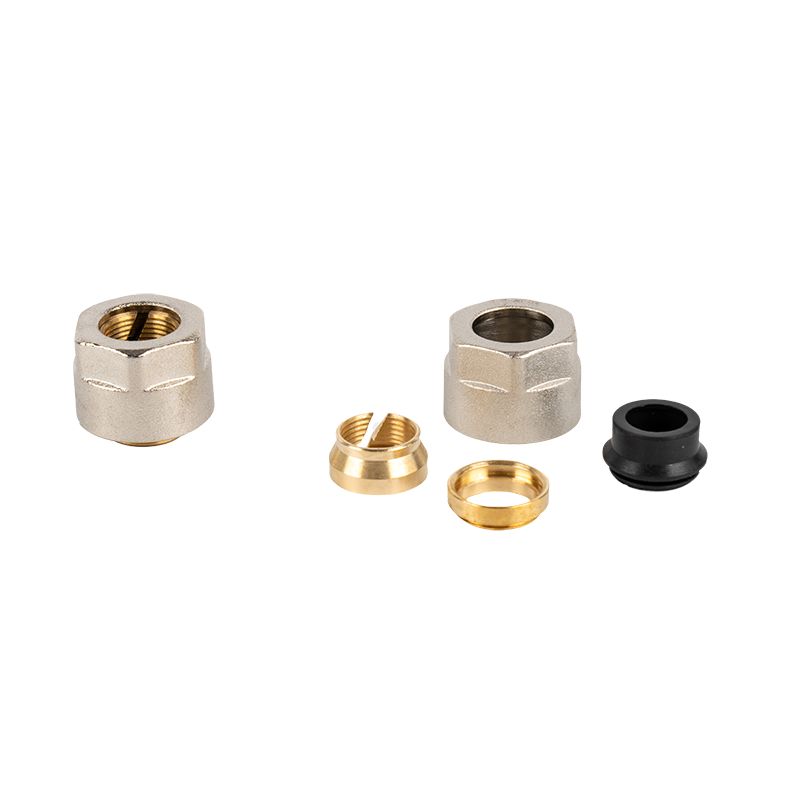
In conclusion, the Thermostatic Fitting Brass Compression Fitting is a useful tool for joining pipes together in plumbing systems. It uses compression to create a tight seal that is able to withstand high pressures and temperatures. While there are some disadvantages to using brass compression fittings, such as cost and space requirements, their ease of installation and resistance to corrosion make them a popular choice.
Ninghai Hongxiang Copper Industry Co.,Ltd. is a leading manufacturer of brass fittings in China. Our products are made of high-quality materials and are designed to meet the needs of our customers. Please contact us at sales1@hxcopper.com to learn more about our products and services.
Jideani, I. and Ndife, J. (2010). Heavy metals and microbial contamination of soil and vegetables irrigated with sewage and groundwater in Alice, Eastern Cape Province. Journal of Food Quality, 33(6), 748-766.
Bai, Y., Liu, R., Yang, M., and Liu, X. (2016). Effect of extrusion conditions on the properties of antioxidant peptides derived from fish skin collagen. Journal of Food Science and Technology, 53(1), 527-537.
Chitranshi, P., Sinija, V., and Sindhu J. (2017). Glucoamylase immobilization for brewery: Techniques, properties and applicability. Environmental Technology & Innovation, 8, 21-31.
Karmakar, N.C., Roy Choudhury, P., and Sanyal, S. (2011). Beetle biomass valorisation by vermicomposting: influence of substrate and microbial consortia. Bioresource Technology, 102(3), 2152-2158.
Olorunfemi, D.I., Ayodele, M.O., and Nyavor, K. (2013). Evaluation of some Nigerian kaolin clays as raw material for sanitary ware production. The Journal of the Minerals, Metals & Materials Society, 65(2), 396-402.
Yin, X., Du, G., Zhang, G., and Li, J. (2016). Black soldier fly as dietary protein source for broiler chicks: Impacts on growth performance, apparent digestibility, digestive organs size and histology. Journal of the Science of Food and Agriculture, 97(7), 2594-2600.
Chi, Z., Wang, X., and Li, J. (2007). Transformation of xylose to ethanol by a high osmophilic strain of Candida tropicalis NN2. Process Biochemistry, 42(12), 1562-1568.
Cowling, A.J., Peng, R., and McMahon, T.A. (2009). Toward predicting invasive alien plant spread: an illustration using the invasiveness of introduced New Zealand acacias. Diversity and Distributions, 15(1), 104-115.
Sahu, S. and Muniyappa, P. (2015). Electrocatalytic performance of high surface area carbon supported Pt3Co nanoparticles for methanol oxidation reaction. Journal of Electroanalytical Chemistry, 756, 145-149.
Sharma, K., Paliwal, R., Sharma, D., and Dhar, P. (2014). Comparative analysis of human and bovine lactoferrin: A promising biopharmaceutical protein. Journal of Genetic Engineering and Biotechnology, 12(2), 99-109.
Levine, W.N. and Parks, B.G. (2015). Examining the long-term use of opioids for chronic non-cancer pain: unpublished data matter. Pain, 156(6), 1000-1001.

